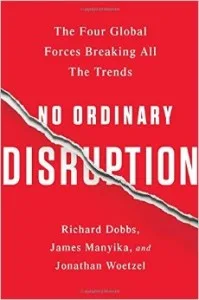It’s no understatement that the sense of globalization — the promise and the peril — is vastly different than it was just a decade ago.
As Yale Insights writes: “We thought we knew what globalization was at the end of the 20th century. The combination of IT developments, lowering trade barriers, and improved shipping efficiency meant that every company had to think globally, often resulting in outsourcing and the opening of global divisions. But, as Thomas Friedman pointed out in a talk at Yale SOM last year, that view of globalization may already be obsolete. In the last ten years, he argued, the world ‘went from connected to hyper-connected and from interconnected to interdependent.’”
So how should today’s multinational corporations — the ones that seek to deliver consistent goods and services globally, while customizing those goods and services to meet local or regional requirements — navigate the changing terrain?
Virgin Group Chairman Peter Norris explained to Yale Insights how his company does it, in a terrific video discussion. Said Norris: “We think to share risk and reward with people who are much more expert in particular areas whether it is geography or industry makes a great deal of sense. We try to keep things, really, as simple as we can because we’ve found out over the years that complexity is never your friend and it’s almost always your enemy,”
And Norris isn’t the only one to notice the changing rules of globalization.
 In a new book released today, “No Ordinary Disruption: The Four Global Forces Breaking All the Trends” three McKinsey authors explain how “the world economy’s operating system is being rewritten.” They posted an excerpt on the McKinsey site, describing “the trends reshaping the world and why leaders must adjust to a new reality.” These include:
In a new book released today, “No Ordinary Disruption: The Four Global Forces Breaking All the Trends” three McKinsey authors explain how “the world economy’s operating system is being rewritten.” They posted an excerpt on the McKinsey site, describing “the trends reshaping the world and why leaders must adjust to a new reality.” These include:
- “Beyond Shanghai: The age of urbanization. The first trend is the shifting of the locus of economic activity and dynamism to emerging markets like China and to cities within those markets.”
- “The tip of the iceberg: Accelerating technological change. The second disruptive force is the acceleration in the scope, scale, and economic impact of technology.”
- “Getting old isn’t what it used to be: Responding to the challenges of an aging world.”
- “Trade, people, finance, and data: Greater global connections. The final disruptive force is the degree to which the world is much more connected through trade and through movements in capital, people, and information (data and communication)—what we call ‘flows.’”
A trailer for the book can be seen here:
